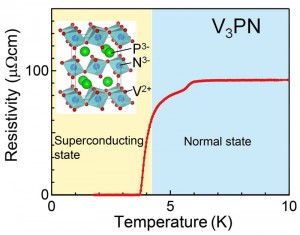Discovery of new superconductor family New guide to high-temperature superconductors

Superconductivity is a phenomenon characterized by a loss of resistivity below a critical temperature. After the discovery of superconductivity in mercury in the early 20th century, much effort has been devoted to revealing the microscopic mechanism. The BCS theory established in the middle 20th century identified that the breakdown of the gauge symmetry induced by the formation of electron pairs is an essential mechanism for the emergence of superconductivity. Superconductivity is important also from the industrial viewpoint, since electric current can flow through a superconductor without dissipation. However, the low critical temperature at which superconductivity emerges has been a major bottleneck for further applications. Up to now, many superconductor families such as cuprate oxides, iron-based pnictides, and magnesium diboride have been discovered; however, their critical temperatures are much lower than room temperature. As a result much research has been carried out in the search for new families of superconductors.

© Kenya Ohgushi, The resistivity of an anti-post-perovskite compound V3PN. The resistivity drops to zero at low temperature, indicating the onset of superconductivity. The inset shows the crystal structure.
Now, a research team headed by Project Associate Professor Kenya Ohgushi from the Institute for Solid State Physics at the University of Tokyo has discovered a new superconductor family. His team focused on the vanadium compound V3PN with an anti-post-perovskite structure, and demonstrated that the compound exhibits superconductivity below 4.2 K. This is the first report of superconductivity in an isostructural compound. Even though the critical temperature is limited to low temperatures at present, it should be possible to increase the critical temperature by optimizing chemical composition. Moreover, it is anticipated that it may be possible to explore new superconductors with high critical temperatures by identifying the microscopic mechanism of superconductivity in this compound.
Press release [pdf] (Japanese)
Paper
Bosen Wang, and Kenya Ohgushi,
“Superconductivity in anti-post-perovskite vanadium compounds,”
Scientific Reports 3, 3381 (2013), doi: 10.1038/srep03381.
Article link
Links
Institute for Solid State Physics
Division of New Materials Science, Institute for Solid State Physics
Ohgushi group, Division of New Materials Science, Institute for Solid State Physics






